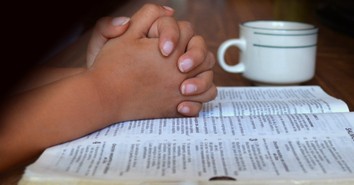Teaching State History: An Outline With Projects

Editor's Note: This article originally appeared in the Fall 2011 issue of The Old Schoolhouse® Magazine, the trade magazine for homeschool families. Read the magazine free at www.TOSMagazine.com or read it on the go and download the free apps at www.TOSApps.com to read the magazine on your Kindle Fire or Apple or Android devices.
German spies infiltrated the Pennsylvania Railroad during World War II. A Pinkerton detective went undercover as a coal miner to investigate the Molly Maguires in the coal regions of Pennsylvania. Frank Piasecki, who invented the dual-rotor helicopter, first built a helicopter in his garage in Philadelphia and tested it by flying around the surrounding countryside. These are just some of the interesting facts my family uncovered as we explored Pennsylvania state history.
Following are some of the ideas and activities that have emerged out of those years. Although originally designed to teach Pennsylvania history, this plan can be used to study the history of any of the fifty states.
Most children in fourth through eighth grade will be able to read and complete the activities independently. Special needs children and younger children will need more help, including some adjustments to the activities. Older children can use the outline and question prompts to write a research paper or devise their own projects.
Gather together any books about your state that you may already have. Next, go to your public library and see what is available. What you don’t find anywhere else can usually be found on the Internet. A list of some sites that we found helpful is offered in the sidebar.
Introduction
Activity: Make a “learning web” to show what you, the student, already know about your state. (See sidebar.) Save your web so you can add to it when you have completed this state history study.
Origin of the State
1. Thirteen Colonies
Activity: Find a map of the original thirteen colonies of the United States by looking in a U.S. history book or online. Was your state one of them? If so, draw a map of the original thirteen colonies and label your state.
2. Other
Activity: If your state wasn’t one of the original thirteen colonies, how and when did it become a state? Learn about your state by reading a book about it, or read about it online. Write a newspaper article announcing your state’s entry into the Union. Include the date and circumstances.
Symbols
1. State symbols
Activity: Each state legislature has chosen a certain bird, mammal, tree, flower, etc. to represent its state. These can be found online at www.netstate.com. Make a set of flashcards with the general category on one side and specific object on the other. Use the flashcards to learn the state symbols.
2. Coat of Arms
Activity: Find a picture of your state’s coat of arms, draw it, and make a list of the objects included on it. Try to find out the meanings of those objects and why they’re included.
3. Nickname
Activity: Find out the nickname of your state. Why does your state have its particular nickname? Make a banner with your state’s nickname on it.
4. Slogans
Activity: Most states also have a tourist slogan. Investigate how that slogan was chosen. Create your own slogan for your state and be able to explain why you chose it.
Native Americans
1. Tribes
Activity: Find the names of the tribes who lived in your state. Make a booklet about one of the tribes. Label and draw pictures to illustrate a page for each of these topics: food, dress, home, and language.
2. Locations
Activity: Find out specifically where each tribe lived. Draw a simple map of your state. Color the map and label the locations.
Early Settlers
1. European Immigrants
Activity: Find out what brought immigrants to your state. In a book about your state, check the index for names of specific nationalities. Make a chart with the nationalities and the reasons they left their homes to come to your state. An interesting site online is The New York Times Immigration Explorer. You can click on a nationality and move a slide to show its population in your state through the years.
2. Movement From Other States
Activity: Check to see if groups of people moved from another state to your state and find out why. Make another chart that illustrates this information.
3. Personal Family History
Activity: Draw a family tree and include the locations where your ancestors were born. Ask your grandparents and/or use one of the online genealogy sites.
Industry
1. Past Industries
Activity: Make a timeline to show which industries operated at different times in your state’s history. One way to divide the timeline is according to the beginning dates of wars. War usually changed a state’s industries, especially the Revolutionary War (1775–1783), the Civil War (1861–1865), World War I (1914–1918), and World War II (1939–1945).
2. Specific Industry
Activity: Pick one of the early industries of your state. Learn more about it. Read a description of one of the processes involved in that industry. For example, the iron industry needed charcoal. If the production of iron was an early industry in your state, read about how the charcoal was produced. Another industry was lumbering. How did the logs reach the cities? Draw a cartoon-type illustration to show one of the processes involved in the industry that you chose.
3. Great Inventors
Activity: Find out if any great inventors lived in your state. Look in your reference books or do an online search for “great inventors from (your state’s name).” Draw a picture of some of their inventions, or take photos of modern tools that have been developed as a result of their inventions. Label each with the inventor’s name.
Major Events
1. Catastrophic Events
Activity: Read first-person accounts of catastrophic events in your state. Fill in a chart for each event to answer who, what, when, where, and how.
2. Other Events
Activity: Each state has a unique history. What unique events took place in your state? If possible, conduct an interview with someone who knows about it. First, make a list of questions to ask. Then, as you interview, take notes or video record. If you have no living resource person, read a firsthand written account from that period and make up a pretend interview with answers that use real facts.
Natural Resources
1. State or National Parks
Activity: Investigate how the state and national parks in your state came to be and how they got their names. Use a website that gives information about the parks. Look for the historical information section. Design a game based on the information that you find. Write clues about each park and make a path with them on the game board. Prepare and keep nearby a master sheet that lists the answers. Invite a friend or family member to play. Use a die to move. Whoever can identify the park gets to move extra spaces. First one to the end wins!
2. Historic Waterways
Activity: Look for the major rivers in your state and discover which towns or cities are located near them. Look at the history of one of those towns and find out what part the waterway played in the settlement of the area. Many towns have websites that feature accessible historical documents.
Cities
1. Major Cities
Activity: Identify the largest cities by reviewing a population chart. Locate those cities on a map of your state.
2. In-Depth Study
Activity: Investigate a different city from the one you picked during the waterways lesson. Find out when it was founded and why. Research what its major industries used to be. What different groups of people settled in that city? What historical sites are there? Design a poster telling about the history of that city.
Government
1. Capital
Activity: Visit your state’s Capitol building in person or online.
2. Organization
Activity: Find out how your state government is organized politically. Write to one of your state representatives or senators and request information about your state government.
Historical Places and Tourist Sites
1. Tourism
Activity: Visit an online tourist site, or pick up pamphlets about your state’s main attractions in a Welcome Center. Make your own travel brochure, highlighting the most interesting places with hand-drawn pictures and short descriptions.
2. Locations
Activity: Using a road map, circle the locations of the tourist sites that you chose.
Transportation
1. Land Travel
Activity: What were some of the early forms of transportation in your state? Using cereal box cardboard, make a 3-D model of one of them.
2. Water Travel
Activity: What kinds of boats were first used in your state? Look for an interesting story involving water travel. Make up a skit about it.
War Involvement
1. State’s Role
Activity: What battles were fought in your state? What part did your state play in each of the early wars? Look for names of organizations that ministered to victims. Make a timeline listing the information that you found, and include these wars: Revolutionary War (1775–1783), French and Indian War (1756–1763), Civil War (1861–1865), War of 1812 (1812–1815), and the Spanish-American War (1898).
2. Specific People
Activity: Make a list of commanding officers and heroes from your state. Include the hometowns of those war veterans. One place to look is www.homeofheroes.com.
Famous People
1. Presidents
Activity: Were any U.S. Presidents born in your state or did any of them live there at any time? Have their birthplaces or residences become historical sites? Visit them or learn about them online.
2. Industry
Activity: Were any famous industrialists from your state? What industries were they involved in? Some books written about your state will offer this information, or you can type in a search on the Internet for “famous industrialists from (your state’s name).” Create line drawings to represent the industries. Use your line drawings to illustrate the lists of men that you found who are famous for developing that industry. You can post your drawings above the lists, use the drawings to encircle the lists, or use the names of the industrialists as the lines in your designs.
3. Writers, Actors, Musicians, Artists, and Other Famous People
Activity: Make a chart with spaces to list five or six people’s names. Include these headings: name, birthplace, years lived in your state, other places lived, why they’re famous, good character qualities, and favorite facts. Again, some books can provide a list to choose from, or you can do a search on the Internet for “famous people from (your state’s name).”
Conclusion
Activity 1: Remember the web you drew at the beginning of this study? Now add all the things that you have learned.
Activity 2: Pick a person you have learned about during your study of state history and write a monologue for him. Find pictures of clothing from your subject’s time period. In a used clothing store, look for and buy items of clothing that are similar. Dress in these and present your monologue for your friends, relatives, or homeschool support group.
Helpful Websites
www.ancestry.com—genealogy
www.congress.org—state and national government officials
www.50states.com—state nicknames, biographies, admission to statehood
www.homeofheroes.com—military award citations
www.netstate.com—state symbols, seals, maps, flags, history, government, economy, people
The New York Times Immigration Explorer
www.onegreatfamily.com—genealogy
www.statesymbolsusa.org—state symbols
How to Make a Learning Web
1. Use two pieces of butcher paper taped side by side to create a large area to write on.
2. Write your state’s name in the center
3. Draw webs coming from the center.
4. Add a subtopic to the end of each web.
5. Continue to add webs to expound the information.
Bible Time : Using a State History Outline
Origin of the State
Read about the origin of the Jewish nation. (Genesis 12:1-3, Genesis 12:14-18
Symbols
Talk about some Christian symbols. (cross—John 19:16–18; lamb—Exodus 12:3–11, Leviticus 5:6, John 1:29; dove—John 1:32; fish—Matthew 4:18–20)
Early Settlers
Read about Biblical people leaving their homeland. (Abraham—Genesis 12:4-5; Joseph—Genesis 37:28; Jacob—Genesis 28:1-5, Genesis 46:1-7; Israelites—Exodus 13:17-22; Early Christians—Acts 8:1-5)
Industry
Discuss what the Bible says about work. (Genesis 3:17-19, 2 Thessalonians 3:7-12)
Major Events
Discuss some major events in Biblical history. (Creation—Genesis 1, First Sin—Genesis 3, Flood—Genesis 7, Tower of Babel—Genesis 11)
Natural Resources
Discuss man’s relationship to creation. (Genesis 1:26-30; Psalms 8:6-8; Matthew 10:31)
Cities
Look at some history of Jerusalem, originally named Salem. (Genesis 14:18; Judges 1:8 1 Chronicles 11:4-8 2 Chronicles 2; Ezra 1:1-4 Nehemiah 2:5-20; Matthew 21:9-11; Acts 2)*
Government
Discuss what our attitude toward government should be. (Matthew 22:18-21, Acts 5:27-29 1 Timothy 2:1-3)
Historical Sites
Read about some historical sites of the Bible. (Oaks of Mamre—Genesis 13:18; Bethel—Genesis 35:1; Red Sea—Exodus 14:13-31; Mount Sinai—Exodus 19:18-25; Solomon’s Temple—1 Kings 6)
Transportation
Look up Bible references to transportation. (Exodus 14:9; Numbers 22:22-31; Nehemiah 7:6 Nehemiah 7:68-69 Acts 8:26-31 Luke 19:28-38)
War Involvement
Read about some wars noted in the Bible. (Israelites vs. Jericho—Joshua 6:1-20, Israel vs. Aram—2 Kings 6:8-23)
Famous People
Read and discuss the famous Biblical people of faith. (Hebrews 11)
State Science
1. Trees
Activity: Find a book or a website about trees that can be found in your state. Use it to identify the local trees in your neighborhood or park. Learn about products that come from each tree and the history of the tree. Was it originally brought from another country or another state? Make a chart with these headings: common name, scientific name, average height, location in state, products, and history.
2. Flowers
Activity: Make colored drawings of flowers found in your state, or find a list of your state’s flowers and write down which ones you’ve seen. If possible, find out which are indigenous to your state.
3. Animals
Activity: First, make a list of animals common to your state. Then, do a more in-depth study of one of them and write a report about that animal. Include whether that animal always lived in your state or where it originally came from, if possible.
Rusty and Sandy Sieber live near Thompsontown, Pennsylvania, and have always homeschooled their four children. Suzanne and Tad have graduated. Matt will finish this year, but Ben will be their student for a few more years. Sandy holds a M.Ed. and works part-time as a substitute teacher. She has written workbooks for students to use when studying Pennsylvania history. Her website is www.pahistorybooks.com.
Photo Credit: ©GettyImages/Lordn
Originally published June 25, 2019.







